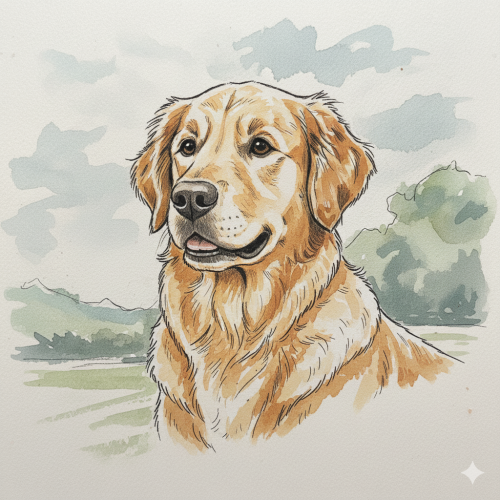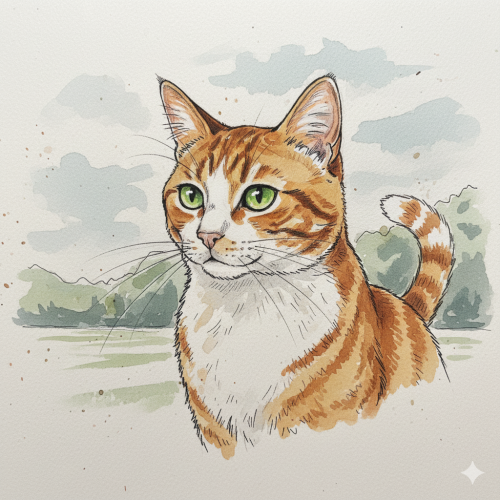The application of cannabis for therapeutic purposes in animals is not a modern phenomenon, but a practice with roots extending back into antiquity. Historical cannabinoid usage in veterinary medicine mirrors its trajectory in human medicine, marked by periods of widespread acceptance, followed by decades of prohibition and eventual modern-day rediscovery.
Historically, cannabis was valued for its analgesic, anti-inflammatory, and antispasmodic properties. Before the 20th century, veterinary medications frequently contained cannabis to treat conditions like colic and spasmodic colon in horses, as well as to help manage pain and inflammation in other working animals.
The 19th century marked a pivotal shift when cannabis moved from traditional folk use to formal scientific investigation in Western medicine. Such changes directly included animal experimentation.
William Brooke O’Shaughnessy’s Research
The most significant historical figure in this regard is Irish physician William Brooke O’Shaughnessy. While working in India in the late 1830s, O’Shaughnessy conducted foundational research on Cannabis indica. His experiments, which laid the groundwork for introducing cannabis to Western medicine, included clinical trials on a variety of animals, such as rats, rabbits, cats, dogs, and horses. He investigated its efficacy for treating conditions like rheumatism, convulsions, cholera, and tetanus. O’Shaughnessy’s work, published in 1839, established the drug’s potential in managing symptoms of diseases that caused severe muscle spasms, such as tetanus and rabies, even if it could not cure them.
Following O’Shaughnessy’s work, cannabis preparations became common in Europe and the United States between 1850 and 1930, widely sold in pharmacies for analgesic and antispasmodic purposes. This acceptance naturally extended into veterinary practice, where cannabis-based tinctures were used to treat pain, sedation, and spastic disorders in companion animals.
The early 20th century brought a dramatic halt to cannabinoid use due to restrictive drug laws and the growing stigma associated with psychoactive cannabis.
Prohibition and the THC Focus
Starting in the 1930s, prohibition legislation effectively ended the legal use of cannabis in both human and veterinary medicine. Research efforts in the mid-20th century heavily focused on Tetrahydrocannabinol (THC) after its chemical structure was discovered in the 1960s, largely ignoring the non-psychoactive compounds.
The modern era of cannabinoid use in pets was triggered by the rediscovery and isolation of Cannabidiol (CBD).
♦ Interested in trying high-quality CBD edibles for yourself? Check out the FGE shop ♦
- 1940s and 1960s Discoveries: Cannabidiol (CBD) was first isolated in the 1940s, though its therapeutic potential was not widely recognized until decades later, particularly in the 1970s and 1980s, when it showed effectiveness in treating seizures.
- The Endocannabinoid System (ECS): The discovery of the Endocannabinoid System in the early 1990s provided the biological basis for how cannabinoids affect nearly all vertebrates, re-igniting scientific interest in animals.
- Legalization and Market Boom: The increase in legalization of cannabis and hemp products (particularly the hemp-derived CBD products containing less than 0.3% THC, often made possible by laws like the 2018 US Farm Bill) led to an explosion in pet-specific supplements. This demand was driven by pet owners seeking natural alternatives for common ailments like osteoarthritis pain, anxiety, and epilepsy in dogs and cats, which are the most researched species today.
While modern clinical research is still catching up to the market demand, the history of using cannabis for animal care demonstrates a consistent, centuries-old recognition of its potential therapeutic value.
Species-Specific Applications and Safety Notes
While the ECS is present in all vertebrates, the density and distribution of cannabinoid receptors vary by species, leading to differences in effective dosing and safety profiles. It is crucial to note that Tetrahydrocannabinol (THC), the psychoactive compound in cannabis, can be toxic, especially to dogs, and should generally be avoided in favor of low- or zero-THC CBD products.
Dogs (Canines)
Dogs are the most-researched pet species in cannabinoid therapy, with several promising studies. Research has shown that CBD can significantly decrease pain and increase activity in dogs with osteoarthritis and chronic joint pain. Clinical trials have also indicated that CBD-rich products can reduce seizure frequency in dogs with epilepsy. Furthermore, some research suggests CBD products may help reduce the itching and chewing associated with skin allergies like atopic dermatitis. Dogs are particularly sensitive to THC due to a higher concentration of CB1 receptors in their cerebellum, making THC-free or very low-THC products essential for canine safety.
Cats (Felines)
Research in cats is less extensive than in dogs, but it is growing, with similar therapeutic targets. Cannabinoids are being explored as an option for chronic pain, such as that caused by arthritis, a common issue in older cats. Like dogs, cats may find relief for anxiety and stress-related issues. CBD has also been used for dermatologic pathologies and is being explored as a supplement for cancer care. Cats metabolize drugs differently from dogs, and there is less data on long-term safety and metabolism, emphasizing the need for veterinarian guidance.
Horses (Equines)
Cannabis has a long history of use in veterinary medicine for horses. Modern use focuses on managing pain and inflammation, especially in working or geriatric horses with joint issues and arthritis. They are also being explored for their potential to help alleviate inflammatory and digestive conditions, as well as to offer a calming effect for horses experiencing performance anxiety or stress.
Birds and Rodents (Small Animal Pets)
While specific, peer-reviewed clinical data for pet rodents (such as hamsters, guinea pigs), birds, ferrets, and rabbits are limited, the general principle of the ECS applies. In a pet setting, cannabinoids are used for therapeutic relief from pain, anxiety, and inflammation. For birds, the anti-anxiety and anti-inflammatory properties are being investigated for use in managing feather plucking (often a stress-related behavior) and chronic pain. Their unique metabolic rates and small size make accurate dosing and safety monitoring critical in these smaller and exotic species.
Regulatory Status and Professional Guidance
The excitement surrounding cannabinoids for pets must be tempered with caution. The veterinary use of CBD and other cannabis products is still an evolving field with several challenges. Many pet cannabinoid products are sold as supplements and are not approved or strictly regulated by government agencies, meaning product quality and potency can vary widely. Furthermore, safe and effective dosing charts for all species have not been scientifically established. Cannabinoids can also affect liver enzymes that metabolize other medications, potentially leading to adverse drug interactions. The most crucial step for any pet owner considering cannabinoid therapy is to consult with a veterinarian.







